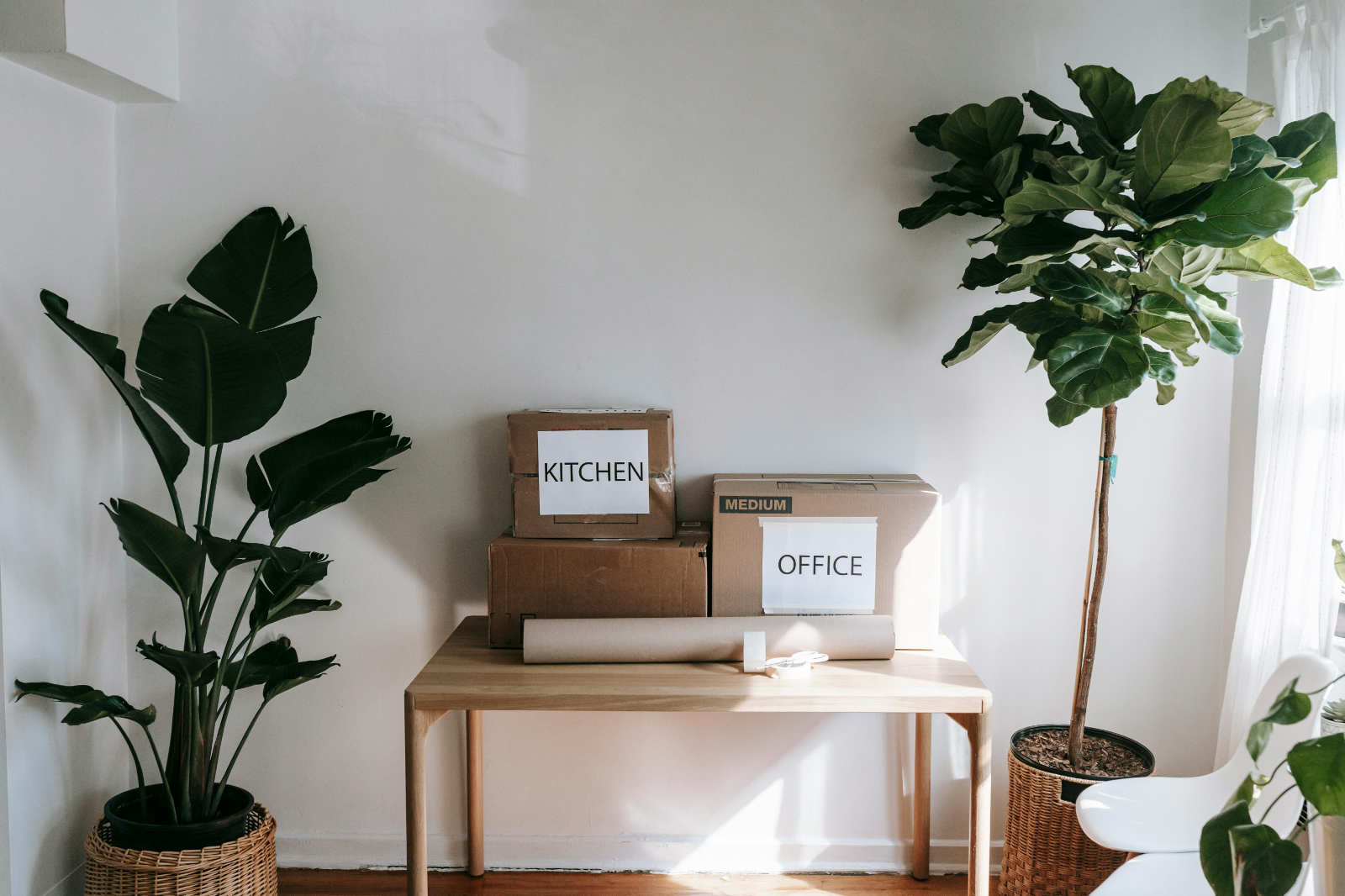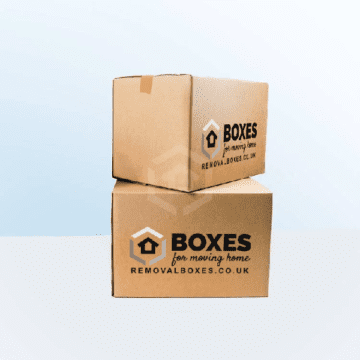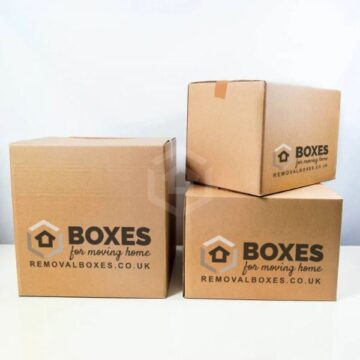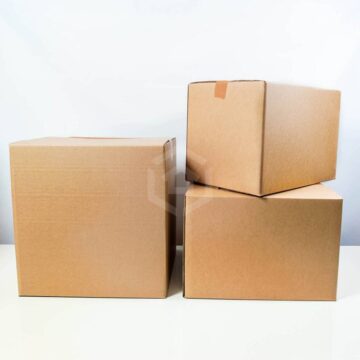Removal Boxes: Detailed List of How Many You Need for Each Room When Moving House
Estimating the number of removal boxes for each room in your house can significantly streamline your moving process. Below is a comprehensive guide detailing the number of boxes needed for various rooms in a typical house, including box sizes—small, medium, large, extra-large, and wardrobe boxes.
You can download or print off this list here: HOW MANY REMOVAL BOXES CHECKLIST
View all our REMOVAL BOX PACKS here.
—
1. Living Room
– Small Boxes: 4-6 (for books, DVDs, small decor items)
– Medium Boxes: 7-10 (for electronics, larger decor items, photo albums)
– Large Boxes: 3-4 (for cushions, throws, small furniture items like side tables)
– Extra-Large Boxes: 1 (for lampshades, large cushions)
2. Kitchen
– Small Boxes: 8-10 (for utensils, cutlery, spices, small pantry items)
– Medium Boxes: 7-8 (for pots, pans, small appliances like toasters)
– Large Boxes: 4-5 (for larger kitchen appliances, dish racks)
– Extra-Large Boxes: 1-2 (for bulkier items like mixing bowls, larger kitchen gadgets)
3. Dining Room
– Small Boxes: 3-4 (for flatware, small decor)
– Medium Boxes: 4-6 (for dishes, serving trays, glassware)
– Large Boxes: 2-3 (for table linens, small furniture items)
– Extra-Large Boxes: 1 (for large decorative pieces, framed art)
4. Bedrooms
Master Bedroom
– Small Boxes: 6-8 (for shoes, books, bedside items)
– Medium Boxes: 8-10 (for clothes, folded linens)
– Large Boxes: 4-5 (for bedding, pillows)
– Extra-Large Boxes: 2 (for bulkier clothing items, comforters)
– Wardrobe Boxes: 2-3 (for hanging clothes)
Additional Bedrooms
– Small Boxes: 4-6 (for books, toys, small decor items)
– Medium Boxes: 7-8 (for clothes, bedding)
– Large Boxes: 3-4 (for pillows, larger toys)
– Extra-Large Boxes: 1-2 (for comforters, large stuffed animals)
– Wardrobe Boxes: 1-2 (for hanging clothes)
5. Bathrooms
– Small Boxes: 4-6 (for toiletries, small items)
– Medium Boxes: 2-3 (for towels, bath mats, small appliances like hairdryers)
– Large Boxes: 1-2 (for bulkier items like bathroom storage units)
6. Home Office
– Small Boxes: 4-6 (for office supplies, books, documents)
– Medium Boxes: 3-4 (for electronics, files)
– Large Boxes: 1 (for office decor, desk items)
7. Garage/Workshop
– Small Boxes: 4-8 (for tools, small hardware)
– Medium Boxes: 6-8 (for larger tools, automotive supplies)
– Large Boxes: 4-5 (for garden tools, equipment)
– Extra-Large Boxes: 2-3 (for bulkier equipment, sports gear)
8. Attic/Basement
– Small Boxes: 4-8 (for seasonal decor, smaller storage items)
– Medium Boxes: 6-8 (for stored clothes, linens)
– Large Boxes: 3-4 (for larger stored items)
– Extra-Large Boxes: 1-2 (for bulky storage items)
9. Laundry Room
– Small Boxes: 2-4 (for cleaning supplies, small items)
– Medium Boxes: 2-3 (for laundry baskets, small appliances)
– Large Boxes: 1-2 (for bulkier laundry items)
10. Closets
– Small Boxes: 2-4 (for shoes, accessories)
– Medium Boxes: 4-5 (for folded clothes)
– Large Boxes: 2 (for larger folded items like blankets)
– Wardrobe Boxes: 1-2 (for hanging clothes)
11. Outdoor Spaces (Patio, Shed, etc.)
– Small Boxes: 2-4 (for small garden tools, outdoor decor)
– Medium Boxes: 4-5 (for larger garden tools, outdoor toys)
– Large Boxes: 2-3 (for cushions, outdoor furniture items)
– Extra-Large Boxes: 1-2 (for large outdoor equipment)
12. Miscellaneous
– Small Boxes: 2-4 (for miscellaneous items around the house)
– Medium Boxes: 4-5 (for assorted items that don’t fit into other categories)
– Large Boxes: 2 (for any large miscellaneous items)
—
Summary
These numbers are estimates and can vary based on the specific contents, size of each room and packing efficiency. It’s always a good idea to overestimate slightly to avoid running out of boxes during the packing process.
When preparing for a move, remember to stock up on essential packing supplies, such as packing tape, bubble wrap, and labels, to ensure that all your items are securely packed and easy to locate when you arrive at your new home.
-
 1 – 2 Bed Guide£106.75 (INC VAT)
1 – 2 Bed Guide£106.75 (INC VAT)
-
 2 – 3 Bed Guide£148.25 (INC VAT)
2 – 3 Bed Guide£148.25 (INC VAT)
-
%22%20transform%3D%22translate(.7%20.7)%20scale(1.40625)%22%20fill-opacity%3D%22.5%22%3E%3Cellipse%20fill%3D%22%23c77633%22%20rx%3D%221%22%20ry%3D%221%22%20transform%3D%22matrix(.27777%2053.04893%20-138.90502%20.72731%20116.3%20153.3)%22%2F%3E%3Cellipse%20fill%3D%22%23fff%22%20rx%3D%221%22%20ry%3D%221%22%20transform%3D%22matrix(-14.2901%20-56.47396%20247.20858%20-62.55339%20114%2025.7)%22%2F%3E%3Cellipse%20fill%3D%22%23eafeff%22%20cx%3D%22111%22%20cy%3D%22238%22%20rx%3D%22255%22%20ry%3D%2228%22%2F%3E%3Cellipse%20fill%3D%22%23fff%22%20rx%3D%221%22%20ry%3D%221%22%20transform%3D%22rotate(-8.7%20163%20-866.3)%20scale(248.93116%2040.90622)%22%2F%3E%3C%2Fg%3E%3C%2Fsvg%3E) 3 – 4 Bed Guide£196.00 (INC VAT)
3 – 4 Bed Guide£196.00 (INC VAT)
-
%22%20transform%3D%22translate(.7%20.7)%20scale(1.40625)%22%20fill-opacity%3D%22.5%22%3E%3Cellipse%20fill%3D%22%23c77633%22%20rx%3D%221%22%20ry%3D%221%22%20transform%3D%22matrix(.27777%2053.04893%20-138.90502%20.72731%20116.3%20153.3)%22%2F%3E%3Cellipse%20fill%3D%22%23fff%22%20rx%3D%221%22%20ry%3D%221%22%20transform%3D%22matrix(-14.2901%20-56.47396%20247.20858%20-62.55339%20114%2025.7)%22%2F%3E%3Cellipse%20fill%3D%22%23eafeff%22%20cx%3D%22111%22%20cy%3D%22238%22%20rx%3D%22255%22%20ry%3D%2228%22%2F%3E%3Cellipse%20fill%3D%22%23fff%22%20rx%3D%221%22%20ry%3D%221%22%20transform%3D%22rotate(-8.7%20163%20-866.3)%20scale(248.93116%2040.90622)%22%2F%3E%3C%2Fg%3E%3C%2Fsvg%3E) Big Move£294.00 (INC VAT)
Big Move£294.00 (INC VAT)



